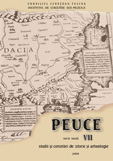Lucernele de la Noviodunum
The Lamps from Noviodunum
Author(s): Victor Heinrich BaumannSubject(s): Archaeology
Published by: Institutul de Cercetari Eco-Muzeale Tulcea - Institutul de Istorie si Arheologie
Keywords: lucerne; Noviodunum; tipuri ceramice; opaiţe romane timpurii; opaiţe romano-bizantine; producţie locală; lucernae; ceramic types; early Roman lamps; Roman-Byzantine lamps; local production
Summary/Abstract: The purpose of this paper is to present the lamps from Noviodunum discovered accidentally or during the rescue excavations conducted until 1990 (some of them were published together with other finds), as well as the lamps found during the systematic archaeological excavations from 1995 to 2008. We analyzed 159 lamps discovered in the archaeological area of Noviodunum fortress and we divided them into two big groups, five categories and 21 types. The production of lighting objects emerged and diversified in Noviodunum and its surroundings in the 2nd century A.D. and was stimulated by the presence of military units and the transit trade on the Danube, which served as a genuine “channel” of Roman civilization. Several beautiful lamps dated to the same period were also found in the tumular necropolis near Noviodunum. Most lamps from Noviodunum date to the Early Roman Period (132 lamps), that is an average of 84%, which we consider a sign of economic fervour in the context of rapid Romanization and urbanization that turned Noviodunum into a flourishing municipium by the end of the 2nd century A.D. The remaining 27 lamps (22 of them were made in Noviodunum) date to the Roman-Byzantine Period indicating the growth of local production. The small number of imported lamps reflects the specific economic situation of the Danubian-Pontic area due to limiting trade only with the Eastern Roman Empire. The local lamp production didn’t diversify, but increased, mainly due to the army’s requirements, and second due to the daily necessities that determined part of the rural farms in the area in the 4th century A.D. to redirect their economy to various crafts, including pottery production for the local market.
Journal: Peuce (Serie Nouă) - Studii şi cercetari de istorie şi arheologie
- Issue Year: VII/2009
- Issue No: 7
- Page Range: 217-310
- Page Count: 94
- Language: Romanian

